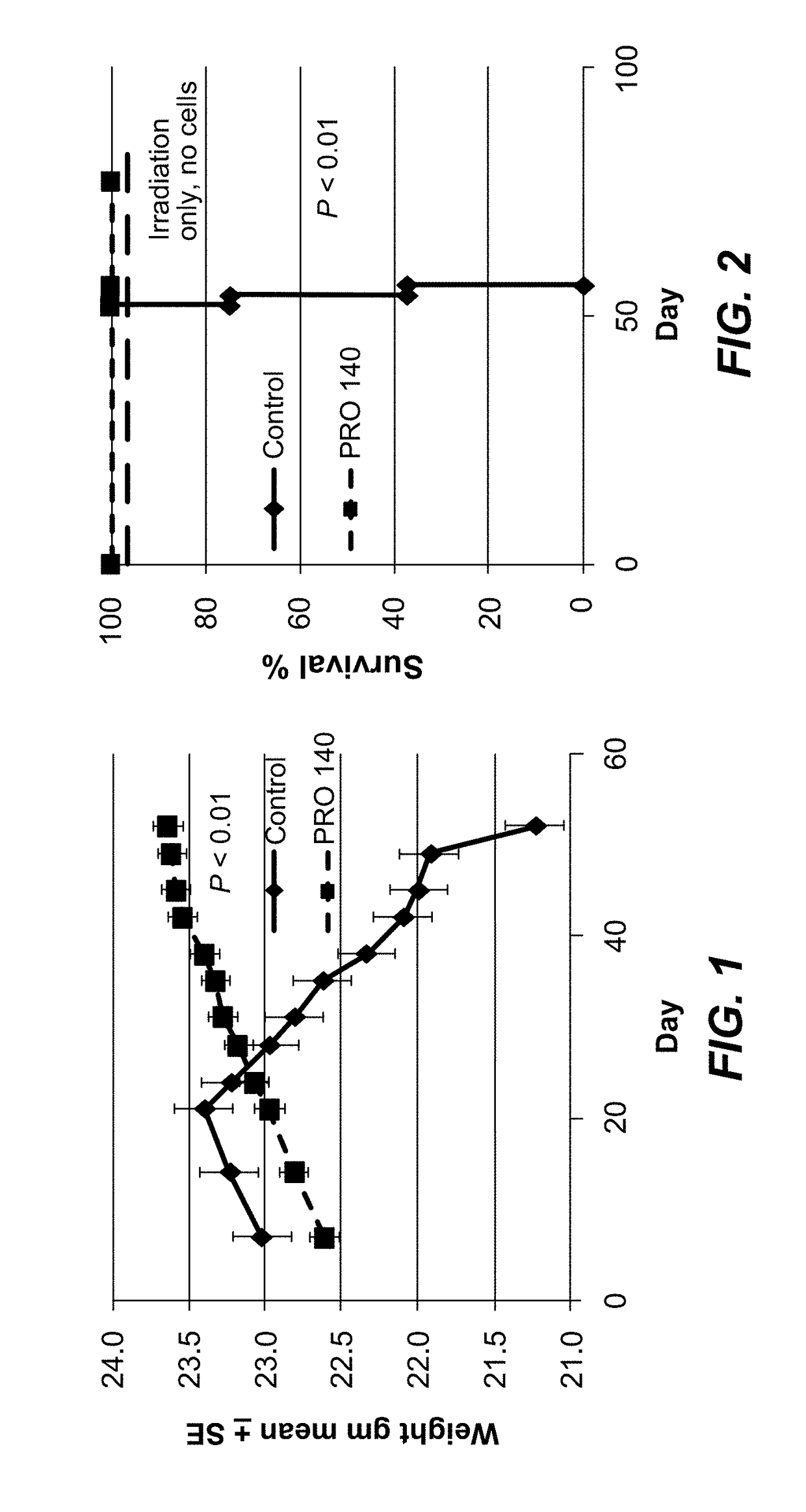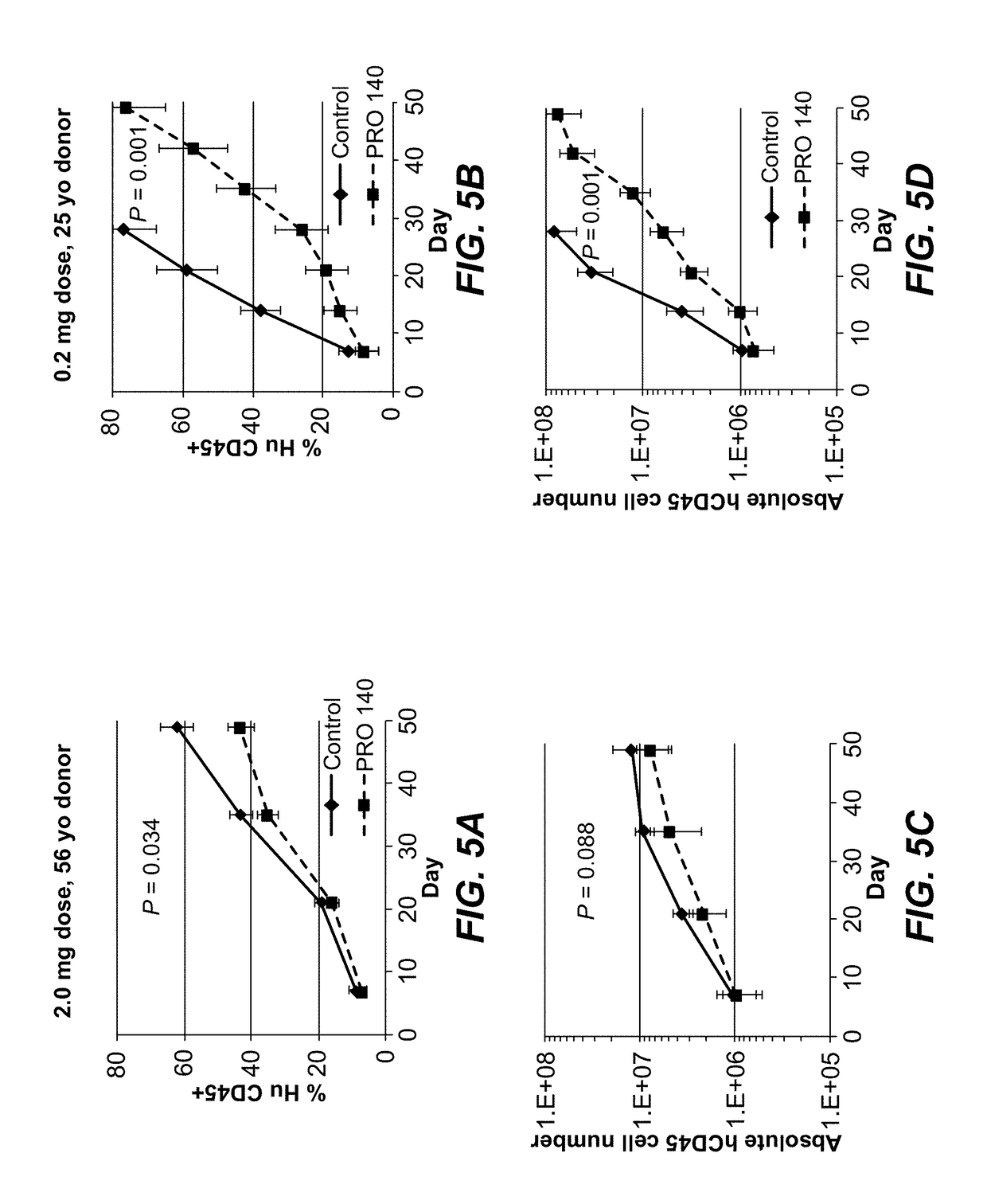Humanized mouse model
a mouse model and humanized technology, applied in the field of humanized mouse models, can solve the problems of overexpression of cytokines and other problems, and achieve the effect of improving or complete reconstitution of the human immune system, improving health and longevity
- Summary
- Abstract
- Description
- Claims
- Application Information
AI Technical Summary
Benefits of technology
Problems solved by technology
Method used
Image
Examples
examples
[0054]These examples describe the present invention as realized in a Graft-versus-Host-Disease (GvHD) mouse model. As stated elsewhere in this application, GvHD is a prevalent and potentially lethal complication following hematopoietic stem cell transplantation. Humanized mouse models of xenogeneic-GvHD are important tools to evaluate the human immune response in vivo.
[0055]It is noted that GvHD can develop, for example, following allogeneic hematopoietic stem cell transplantation (HSCT), which has an important role in a variety of malignant and non-malignant hematological diseases. Donor derived T-cell alloreactivity to human leukocyte antigens (HLA) disparities can result in GvHD which is potentially life threatening. New therapies are needed to address GvHD other than lymphoid depletion strategies as this non-specific approach leaves patients at risk of complications such as infection or cancer relapse (Champlin R, Ho W, Gajewski J, Feig S, Burnison M, Holley G, et al. (1990), Se...
PUM
| Property | Measurement | Unit |
|---|---|---|
| weight | aaaaa | aaaaa |
| weight | aaaaa | aaaaa |
| time | aaaaa | aaaaa |
Abstract
Description
Claims
Application Information
 Login to View More
Login to View More - R&D
- Intellectual Property
- Life Sciences
- Materials
- Tech Scout
- Unparalleled Data Quality
- Higher Quality Content
- 60% Fewer Hallucinations
Browse by: Latest US Patents, China's latest patents, Technical Efficacy Thesaurus, Application Domain, Technology Topic, Popular Technical Reports.
© 2025 PatSnap. All rights reserved.Legal|Privacy policy|Modern Slavery Act Transparency Statement|Sitemap|About US| Contact US: help@patsnap.com



